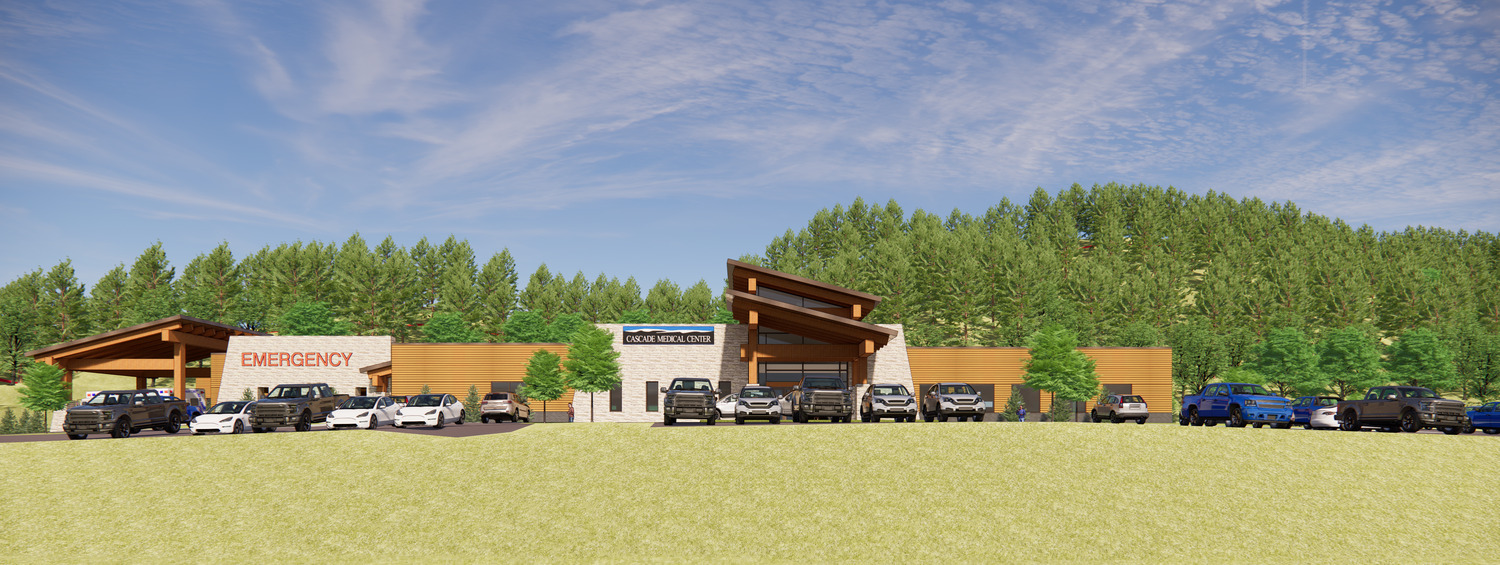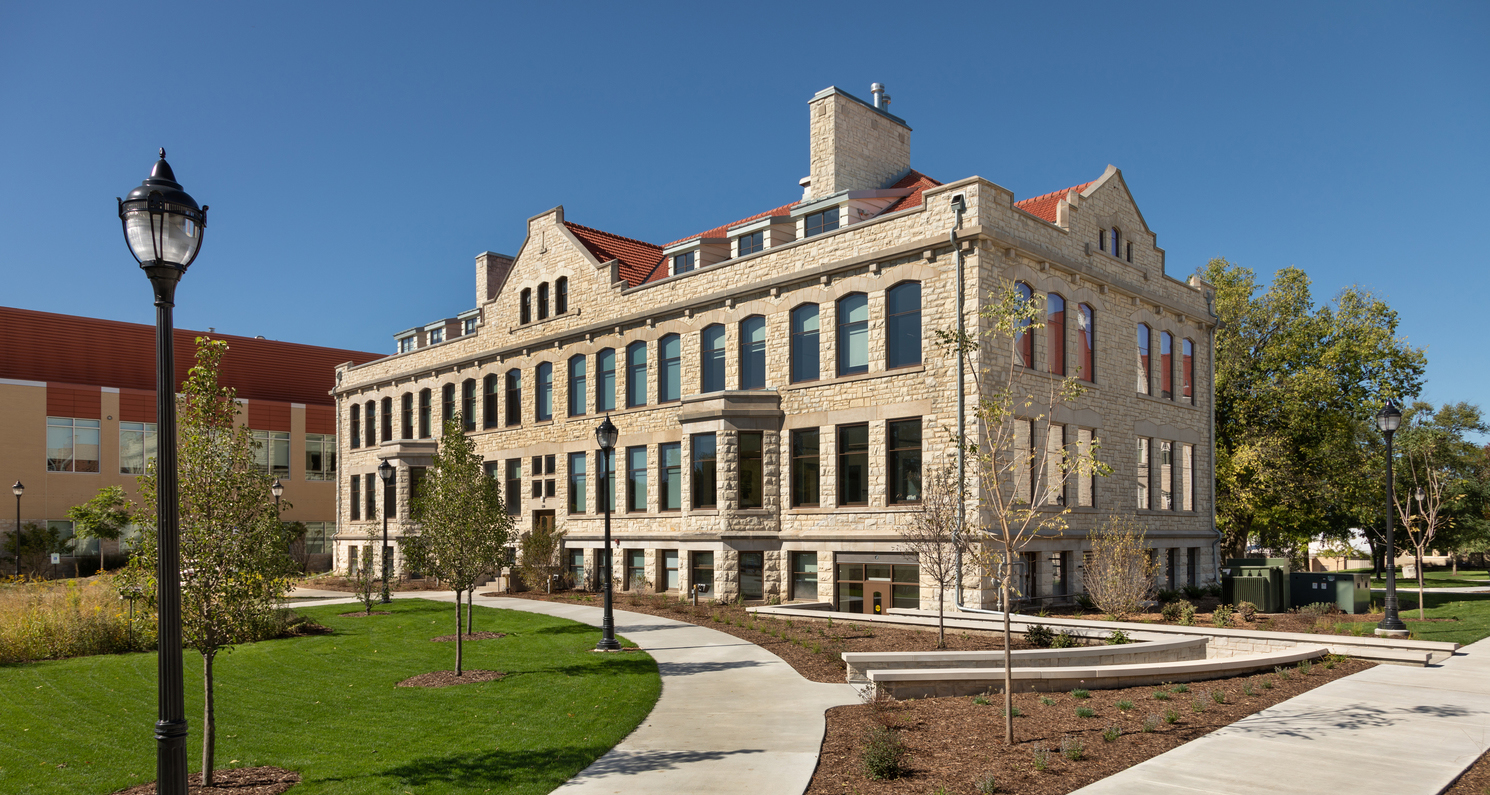Critical Access Hospitals, tasked with providing vital hospital services to their rural populations, face unique challenges while serving their sprawling communities within the confines of budget, space, and oftentimes aging facilities. Strategic healthcare design can be a secret weapon in enhancing patient outcomes and staff wellbeing within these limitations.
Cascade Medical Center, a Critical Access Hospital nestled in the heart of a small mountain community in Idaho, has a regional population ranging from 1,000 to over 10,000 due to seasonal fluctuations and tourism. Responsible for delivering exceptional care with a small team and limited resources, the hospital is a vital lifeline for residents who otherwise might have to travel hours to reach medical care.
For this episode of Side of Design, host Matthew Gerstner spoke with Tom Reinhardt, CEO of Cascade Medical Center joined Brad Krump, AIA, BWBR Healthcare Principal, to get a firsthand look at these challenges and shed light on how design can make a difference.
A Closer Look at Cascade
As the only healthcare facilities within hours of many small communities, Critical Access Hospitals must serve a variety of medical needs. Despite handling fewer patients than larger facilities, Cascade Medical Center’s significance is amplified in a region where timely medical attention can be a matter of life and death.
While the center provides care for trauma patients and emergencies, they also have a rural health clinic and a busy physical therapy practice. Not only is Cascade the nearest hospital for surrounding communities, it’s also the closest option for a doctor’s office. This is true for one community the facility serves, Yellow Pine, Idaho, which is two hours away by car — assuming the weather is good.
The hospital also faces staffing challenges in a region where housing costs are high and earning a corresponding livable wage is essential, making recruiting and retaining qualified staff a difficult task. Simultaneously, the need to modernize an aging and undersized facility looms, with thin financial margins and tax-averse communities.
“Running a hospital in a rural area is all about flexibility and compromise — we have to find ways to make do with what we have,” says Tom. “But it gets really hard to continue to deliver great medical outcomes in a 12,000-square-foot facility. It’s been 12,000-square-feet for 25 years, despite the growth that we’ve seen.”
Because of this, Tom worked with Brad Krump and designers at BWBR to find solutions to propel Cascade Medical Center into the future with a replacement hospital.
The Crucial Role of Design
Cascade Medical Center is a lifeline for the community, and BWBR has worked to be a lifeline for them and other Critical Access Hospitals. Brad shares how BWBR’s design approach for a setting like Cascade involves flexibility, adaptability, and maximizing space efficiencies. Tom knows a thing or two about efficiency, as his team has repurposed storage containers for critical services. That’s a brilliant example of using limited resources ingeniously, and it’s within the spirit of BWBR’s approach.
Brad explains that primary design goals for the project involved designing an efficient facility with rooms that can flex day-to-day based on needs, a strategic layout, and room for future growth. With smart placement of access points, staff areas, and treatment rooms, designers actually reduced the overall footprint of the facility, optimizing the cost of a new center and eliminating the need for expensive expansions in the future.
The power of thoughtful design optimizes operational efficiency and transforms the overall healthcare experience — and not only for patients. Through strong leadership and a commitment to fostering a great culture at the hospital, Tom and his team have dramatically cut a high staffing turnover rate at Cascade. A big part of that has been intentionally infusing the design with elements that promote a strong, positive culture. Cascade Medical Center features space that encourages communal dining and interaction, so staff can create connections, develop a sense of community, and share their expertise.
Creating Safe, Healing Spaces
Both Tom and Brad know that design significantly impacts healing, which also has implications for behavioral and mental health. Part of the solution includes creating spaces that accommodate general staff and patient wellbeing, such as considering light, flow, textures, colors, and proportions. But the team also needed to accommodate patients experiencing mental health crises — keeping in mind the safety and experience of both the patients and the staff caring for them.
“Mental health is in crisis across the country, and it’s especially an issue in rural areas,” says Tom. Cascade Medical Center often serves as an interim facility for patients experiencing mental health crises to receive care in a safe environment before being transitioned to a specialized facility. Cascade recently received a grant to create a safe room within the emergency department to further their efforts in providing quality care close to home.
A Source for Community Pride
Tom, Brad, and their teams want the facility to be a point of pride for the community. It needs to look fantastic from the outside, sending a message of care, capability, and confidence to those passing by —like a place where patients and their families could feel safe in good hands.
They were so intent on creating a positive association for the community that a senior leader at BWBR facilitated a session where people could provide input and ideas and ask questions. “We use the vision that was shared with us and then provide options for them to review and say yeah, that looks like Cascade, or not really. But together collaboratively, we came up with creating the right look and feel for the community,” explains Brad.
That was perfect for Tom because, as he says, “We aren’t building Tom’s hospital; it’s the community’s hospital.” Tom continues to work to receive community approval and funding to build the replacement hospital designed by BWBR. “People are discovering our area because it’s beautiful, and I just hope that as they come to our community and value our community, they’ll see the importance of contributing to the community by way of supporting the hospital,” he shares.
As always, this was just a snapshot of the incredible discussion. Don’t miss the full podcast episode to learn more about how design propels small critical access hospitals towards greater efficiency and quality, creating real change in rural communities. You can find it here.



